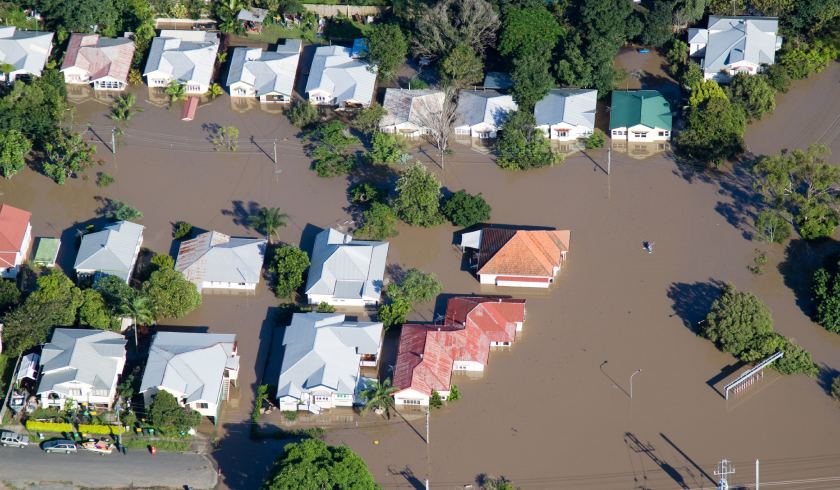Half a million properties at risk of being uninsurable by 2030, report warns
With climate change risks looming, those properties still able to be insured are likely to see their premiums “skyrocket”.

One in 25 properties across the country would be classified as “high risk” of being effectively uninsurable by 2030 due to extreme weather and climate change, according to a new study released by the Climate Council.
The alarming figures represent 3.6 per cent or 520,944 properties across the nation.
The report – which analysed data about damage from past disasters, including bushfires, flooding, coastal inundation and extreme wind with modelling on future climate impacts – also revealed that a further one in 10 or 9 per cent of properties will be medium risk.
Properties that fall under this category are estimated to incur annual damage costs of between 0.2 and 1 per cent of their value.
Nicki Hutley, the report’s co-author and an economist at Climate Council, described the study’s results as “shocking and deeply concerning”.
“It is clear that Australia is fast becoming an uninsurable nation,” the economist said.
She explained that as extreme weather events increase, so does the risk of damage, which in turn will cause insurance premiums to “skyrocket”. In worst-case scenarios, some properties will be rendered uninsurable.
Ms Hutley advised home owners and buyers to have a deep understanding of the local hazards and to acquire a property-specific report on their risk.
“Insurers and banks are already quantifying the risks from climate change. It’s essential that Australians inform themselves about these risks to their safety and financial wellbeing, which are well known to financial institutions and governments,” she said.
Meanwhile, Climate Council chief executive Amanda McKenzie put the federal government on the hot seat for not taking action to address the environmental issue.
“Over the past eight years, the federal government has failed to meaningfully tackle climate change or prepare Australians for the worsening extreme weather events that we are now experiencing,” Ms McKenzie said.
At the end of February, the east coast was pummeled by severe flooding, which decimated thousands of properties across NSW and Queensland.
“Climate change is playing out in real-time here and many Australians now find it impossible to insure their homes and businesses,” she added.
Ms McKenzie also emphasised that the country’s leadership – set to be reshuffled after the 21 May federal elections – will play a big role in reducing climate change risks in the coming years.
“The decisions of the next federal government will influence the future impacts of climate change for generations to come. Pollution from coal, oil and gas must begin to plummet and we must scale up our renewable power so it meets the needs of all sectors of our economy,” she said.
The Climate Council also called on all major political parties and candidates to include green policies in their campaign platforms.
Top 10 most at-risk electorates revealed
The report identified the top 10 at-risk federal electorates based on the percentage of “high risk” properties.
Nicholls topped the foreboding list, with as many as one in four properties predicted to be uninsurable by 2030. That equates to 27 per cent or 25,801 properties across the Victorian electorate.
Particularly, Shepparton faces the greatest risk, with almost 90 per cent of properties in the city seen to be uninsurable by the end of the decade.
Additionally, the report revealed that five federal electorates in Queensland are among the top 10 most at-risk by 2030.
This includes Maranoa (15 per cent or 9,551 properties), Moncrieff (14 per cent or 12,140 properties), Wright (14 per cent or 12,140 properties), Brisbane (13 per cent or 19,355 properties), and Griffith (13 per cent or 14,812 properties).
Other at-risk electorates are NSW’s Richmond (20 per cent or 22,274 properties) and Page (11 per cent or 11,691 properties), and South Australia’s Hindmarsh (11 per cent or 10,775 properties).
The report has also predicted the percentage of properties that will be uninsurable by 2030 in each state and territory.
Queensland is expected to be the most uninsurable state, with 6.5 per cent of its properties vulnerable to severe weather conditions. This was followed by NSW at 3.3 per cent and South Australia at 3.2 per cent.
Of the top 10 electorates to be impacted, riverine flooding was identified as the weather-related event posing the biggest risk to properties.

